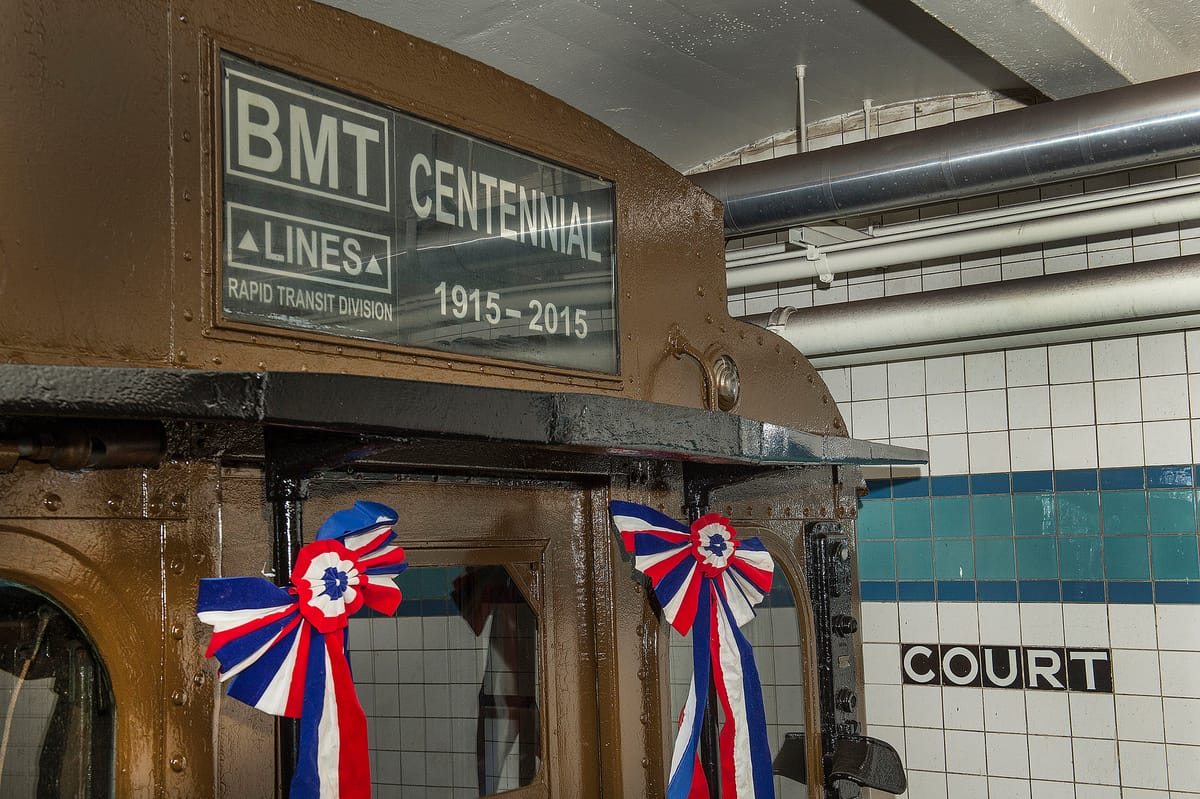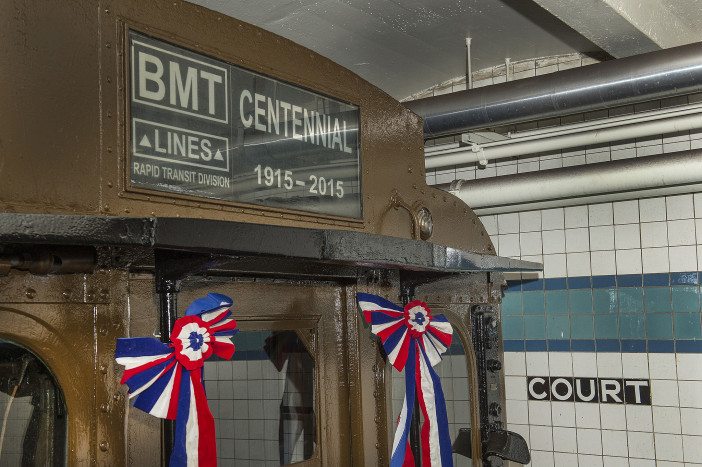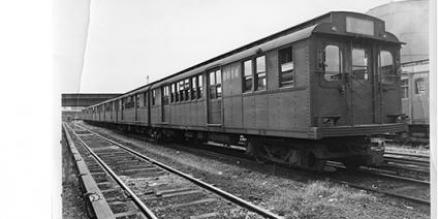Nostalgia Trains And More At Brighton Beach Station This Weekend To Celebrate Centennial Of BMT


Happy 100th anniversary, Brooklyn-Manhattan Transit Corporation!
To celebrate the milestone of New York City’s second oldest subway company, the MTA is celebrating by bringing rides on the famed nostalgia train to the Brighton Beach Q station this weekend.
On June 27 and June 28, from noon to 4pm, four nostalgia trains will run from the Brighton Beach station on non-stop loops every 10 minutes or so. One track will operate a short loop passing through the Ocean Parkway station (again, without stopping), and another track will operate a larger non-stop loop that passes through the Kings Highway station.

Aside from the short rides that show off the workings of the vintage subway cars, some models of which date back nearly 90 years, there will be other venerable models on display at the station.
The MTA is also planning family-friendly centennial-related activities at the station, and there will be a “first-of-its-kind” New York Transit Museum pop-up shop on the platform, according to the MTA.
The entire show is for the cost of a swipe of your Metrocard – and of course you can then get on a regular ol’ train and ride the system at no extra charge.
The BMT opened as the Brooklyn Rapid Transit Company (BRT) on June 22, 1915, marking the first subway to connect Manhattan to Coney Island. The first train crossed the East River via the Manhattan Bridge and headed out to Coney Island along the Sea Beach line – or today’s N train route. The ride from Chamgers Street to Coney Island took 48 minutes.
The system expanded to throughout the first half of the century, with construction of lines that today include the B, J, M, Z, L, N, R and Q trains.
D-Type Triplex model cars, which will be on the tracks this weekend, were rolled out in the mid-1920s, replacing the Standards. That familiar closing door chime? That was an innovation rolled out during the Depression-era, with the experimental Green Hornet cars – which were also the first to feature aluminum bodies and dynamic braking.
After that came the Little Zephyr cars, stainless steel rolling stock that is the grandaddy of the R11 and R32s in use today.
Here’s a rundown of the vintage cars that will be on display or in use this weekend to celebrate the line’s 100th anniversary, from the MTA:
- BRT/BMT Standards (1914-1969): Modeled after Boston Elevated Railway cars, the Standards measure 67 feet long and 10 feet wide and contain 78 seats with an additional 14 drop-down auxiliary seats. The standing capacity of 182 people helped address the chronic overcrowding of the early subway years. The Standards introduced destination roll signs, larger windows, and brighter lighting. They were designed more along the lines of a suburban railroad car, with a maximum of seating philosophy, and even included drop seats for off-peak use.
- BMT D-Type Triplex (1925-1965): A three-car articulated unit that allowed passengers to walk from one car to another through an enclosed passageway. Each Triplex is 137 feet long and seats 160 passengers, the equivalent of 2 Standard cars in size and capacity. At a time when many elevated lines operated with wooden cars, the Triplex represented the height of transit modernity with soundproofing, illuminated signs displaying route destinations and continued the design philosophy of maximum seating.
- IND R1-9s “City-Car” (1930-1977): These cars were ordered for the Independent Subway System (IND) and were known by their contract numbers. R1 through R9 cars feature rattan seats, paddle ceiling fans, incandescent light bulbs, and roll signs for passenger information – all pre-WWII subway staples. They set the standard for more, wider and faster opening doors and a reduction in seating capacity to better accommodate rush hour crowds. R1-9 cars were retired from service in 1977.
- R-11 Prototype “The Million Dollar Train” (1949-1976): One of 10 prototype cars delivered to the NY Board of Transportation in 1949, meant to run on the Second Avenue subway line. They were made from stainless steel and had round porthole windows; high-tech air purification systems that use ultraviolet lamps to kill germs; and illuminated route maps on the wall. At a cost of $100,000 a car, a 10-car train (which was never ordered) would have cost $1 million, giving the train its “Million Dollar” nickname. The R11 cars were put into regular service and spent the majority of their service life on former BMT lines.
The MTA is planning a few other events in conjunction with the anniversary, albeit no others in our area. For more information, check out their website.




